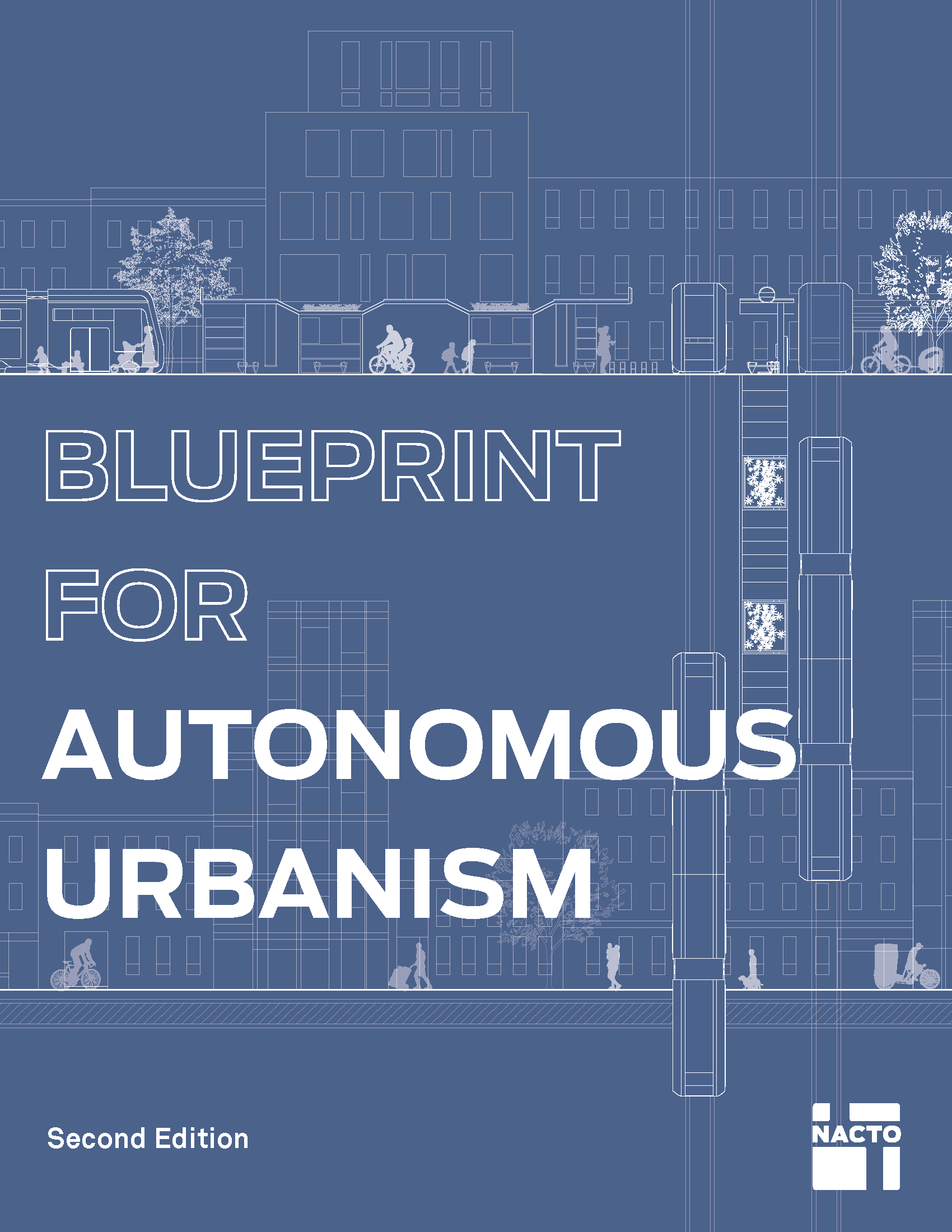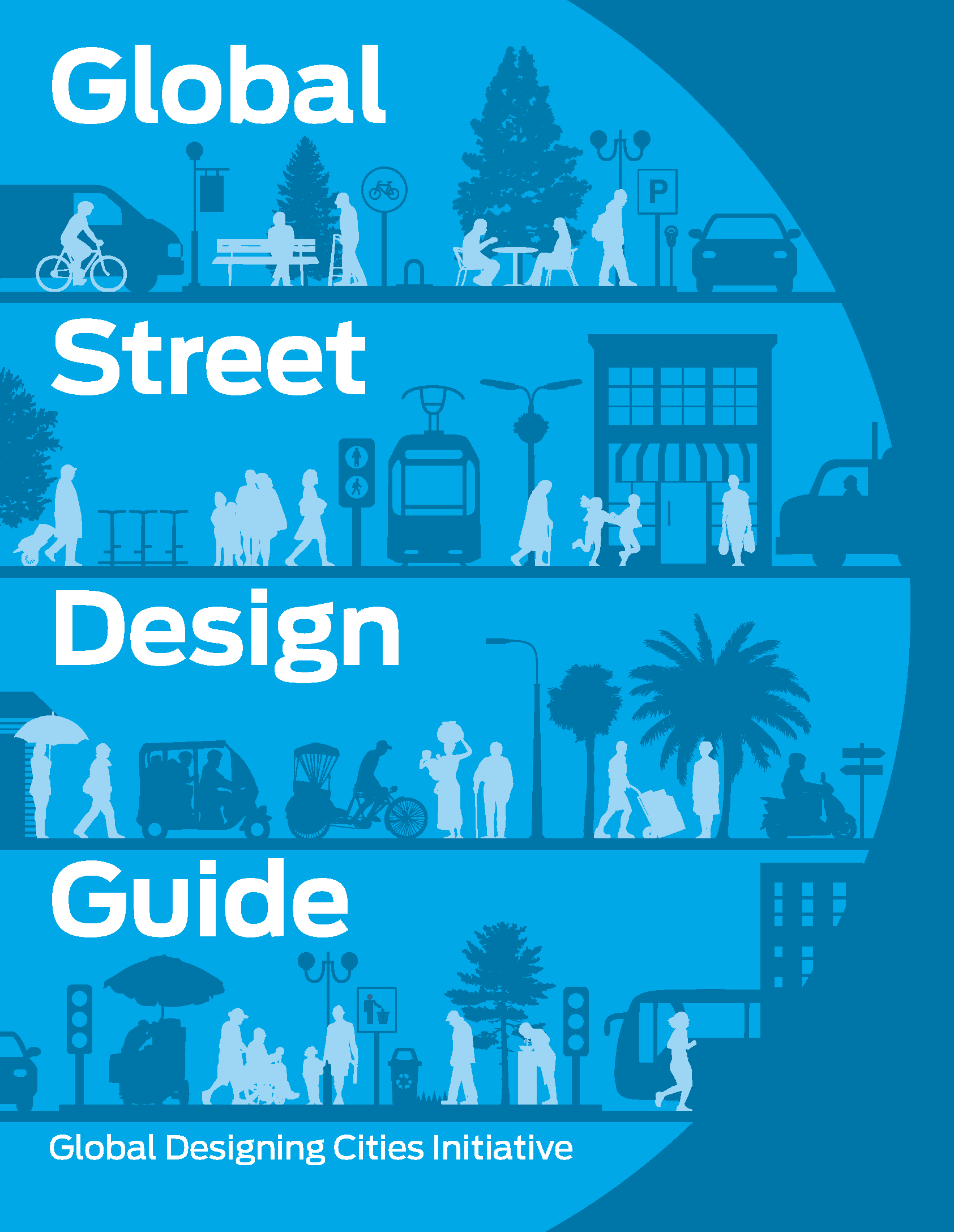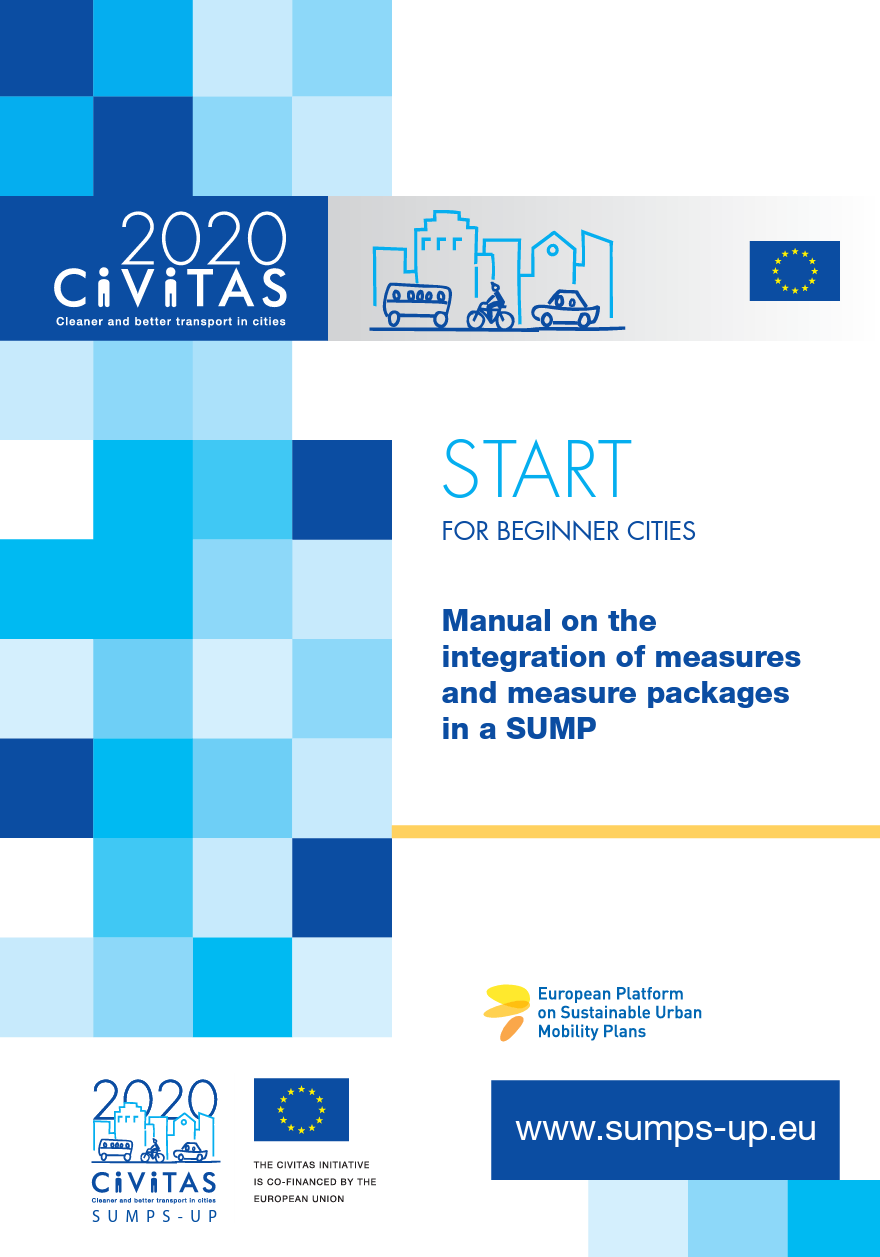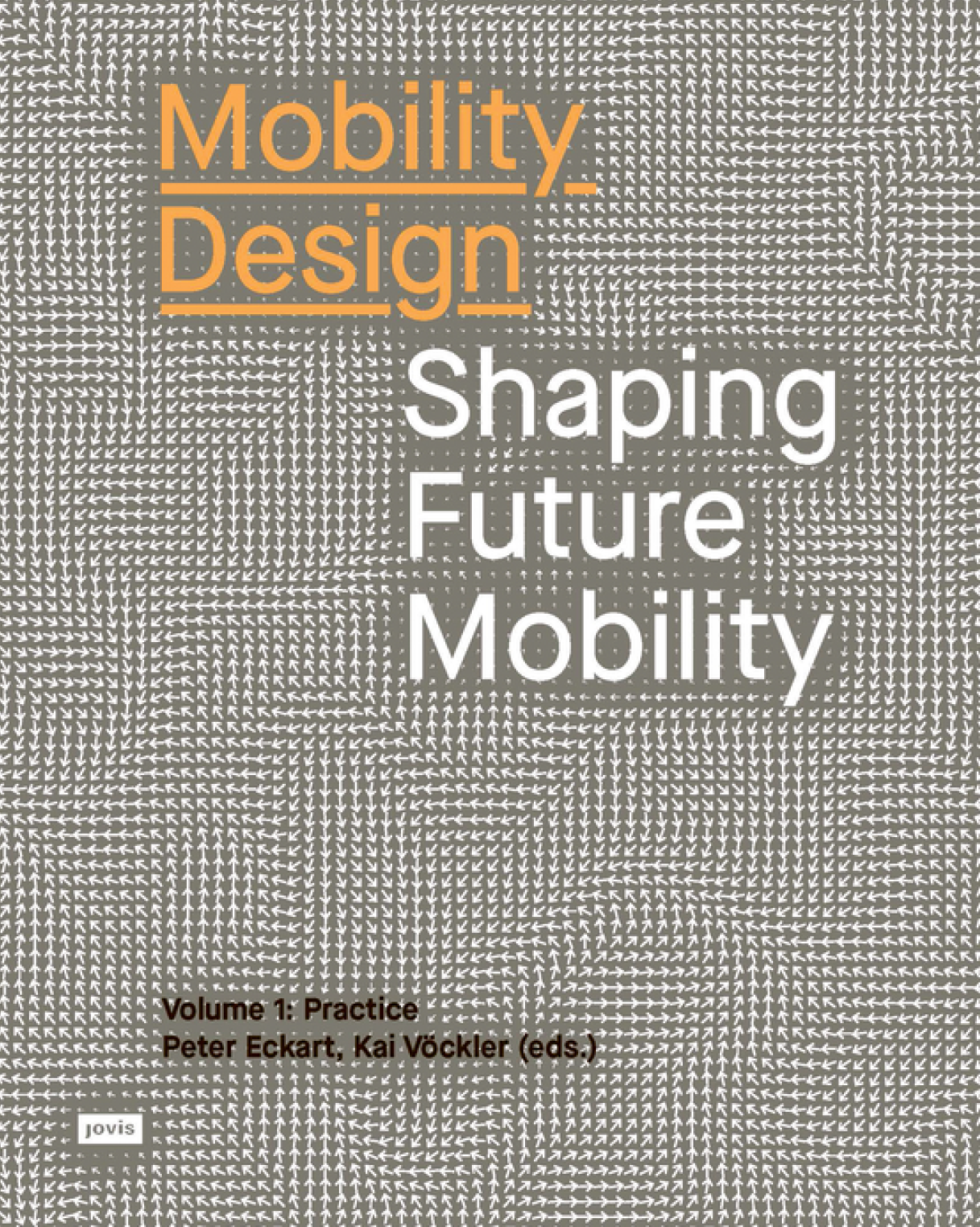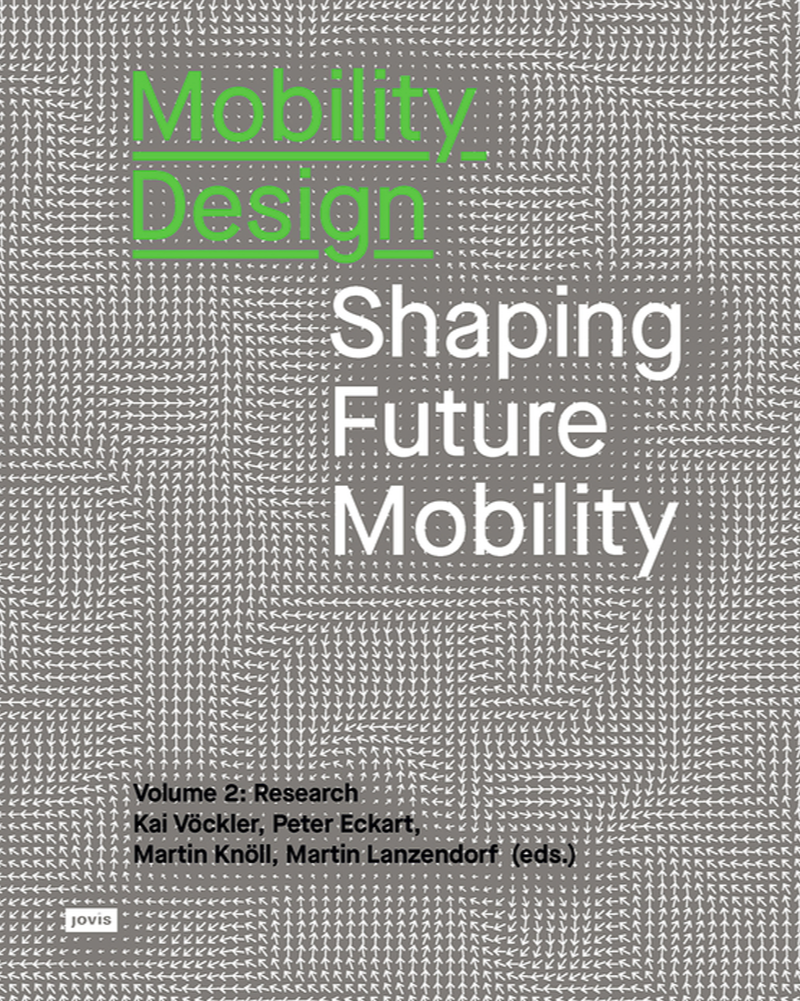
The following comprehensive catalogues, databases and guidelines provide an overview of urban mobility improvement measures.
n
Blueprint for Autonomous Urbanism | NACTO | 2019
The Blueprint for Autonomous Urbanism has been published by the US National Association of City Transportation Officials (NACTO). It prioritizes people walking, biking, rolling, and taking transit, putting people at the center of urban life and street design, while taking advantage of new technologies in order to reduce carbon emissions, decrease traffic fatalities, and increase economic opportunities. focuses on four key policy areas—transit, freight, pricing, and data. For each of these areas it provides examples of policies and measures along with designs and examples of how cities should design their streets.
n
Catalogue of Policy Measures 2.0 Toward Sustainable Mobility | SuM4All | 2022
The Catalogue of Policy Measures (CPM) compiles all the policy instruments available to country decision-makers to achieve sustainable mobility. The original Catalogue included 182 policy instruments. The catalogue was updated in 2020 with 12 new COVID-19 pandemic-related policies. This addition of 12 policy measures has an explicit focus on resilience in the face of the COVID-19 pandemic — bringing the total number of measures to 194. Sustainable Mobility for All (SuM4All) is a global coalition comprising 56 international organizations, and private companies that shares a common ambition toward sustainable mobility and has agreed to work together toward its achievement in countries with a special focus on the Global South.
n
COVID
The COVID-19 global pandemic has altered every aspect of urban life. In response, cities around the world have quickly implemented new street design and management tools to keep essential workers and goods moving, provide safe access to essential services, and ensure that people have safe space for social/physical distancing while getting outside. These evolving practices will shape our cities and our long-term recovery.
n
Database of Urban Mobility Improvement Measures | KonSULT | 2016
The University of Leeds (with support from the European Commission) has developed a Database of Urban Mobility Improvement Measures called KonSULT. It aims to identify appropriate policy measures and packages. It also provides detailed information on individual policy measures. It has a Measure Option Generator that is designed to help cities quickly to identify those policy measures, and packages of measures, which may be particularly relevant to meeting their policy objectives and overcoming their mobility problems. It operates within a matter of seconds, and is equally of use to professionals, politicians, stakeholders and members of the public.It is linked in turn to a Policy Guidebook, which provides more detailed information on over 60 policy measures and includes over 200 case studies. It also has a Decision Makers' Guidebook. Although KonSULT has not been updated recently due to COVID it is an excellent resource.
n
Global Street Design Guide | NACTO Island Press | 2016
The Global Street Design Guide has been published by NACTO and Island press. It is available for download and purchase at the Global Designing Cities Initiative where it can also be explored online. It is very comprehensive and totals over 400 pages and is 360 MB in size. It addresses a variety of street typologies and design elements found in various contexts around the world and provides details of improvement measures for pedestrians, cyclists, transit, freight and universal accessibility as well as dealing with utilities and infrastructure. It is based on case studies from over 40 countries and 70 cities around the world developed with local partners to demonstrate a range of examples where cities have radically transformed their streets.
n
Manual on the integration of measures and measure packages in a SUMP | CIVITAS | 2020
This manual provides support for cities that are not yet familiar with sustainable urban mobility planning and where to start in the context of measure selection. It gives examples and suggestions on how to conduct measure selection, types of measures that can be of interest, how to grade the measures and how to gain approval for the selected measures. It describes four steps to conduct a verified list of feasible, effective measures and it provides a long list of over 140 measures that are summarised in Annex I.
n
Mobility Design 1 | OAPEN Foundation | 2023
Mobility Design: Shaping Future Mobility Volume 1 focuses on the importance of design: over 60 pioneering projects from the fields of design, architecture and urban planning are presented with the help of photos, plan drawings and short texts. With this international overview, Mobility Design not only shows the current state of sustainable mobility systems, but is also dedicated to mobility as one of the most important design tasks of the future.
n
Mobility Design 2 | OAPEN Foundation | 2023
Mobility Design: Shaping Future Mobility Volume 2 brings together research from the fields of design, architecture, urban planning, geography, social science, transport planning, psychology and communication technology. The current discussion about the traffic turnaround is expanded to include the perspective of user-centred mobility design.
n
READY TO GO Sustainable Mobility Measures & Methods | CIVITAS | 2023
Over the past two decades, CIVITAS has supported well over 50 projects and its community of nearly 400 cities to test new methods, measures and approaches to foster sustainable urban mobility. The examples presented here represent CIVITAS achievements that can be directly replicated by cities. They span CIVITAS’s 10 thematic areas and were tested and perfected in 21 cities across 15 different countries. They are available online at Ready-to-go sustainable mobility measures & methods | CIVITAS and as a "Replication Pack" (in pdf format).
n
The Economic Benefits of SUMP Measures | ELTIS | 2016
This report contains the detailed reviews for twenty-two different categories of sustainable mobility measures and interventions. It provides the net beneficial economic returns that are likely to be experienced from these measures, including the range and scale of benefits. It also provides information as to which measures are most likely to work well together in respect of producing more sustainable mobility and providing economic benefits. It provides concise information on the wider benefits that might flow from deploying the intervention and the factors that could help a city to deploy the measure successfully.


